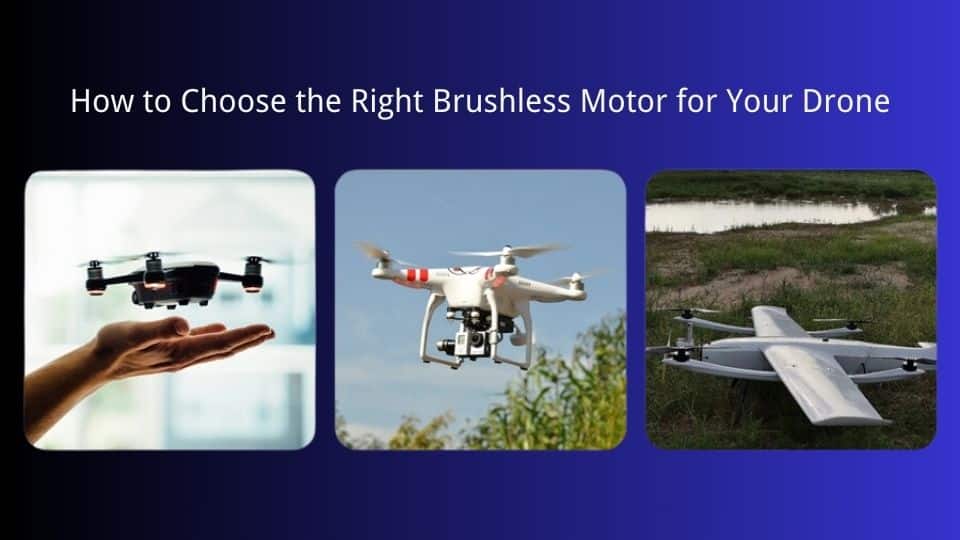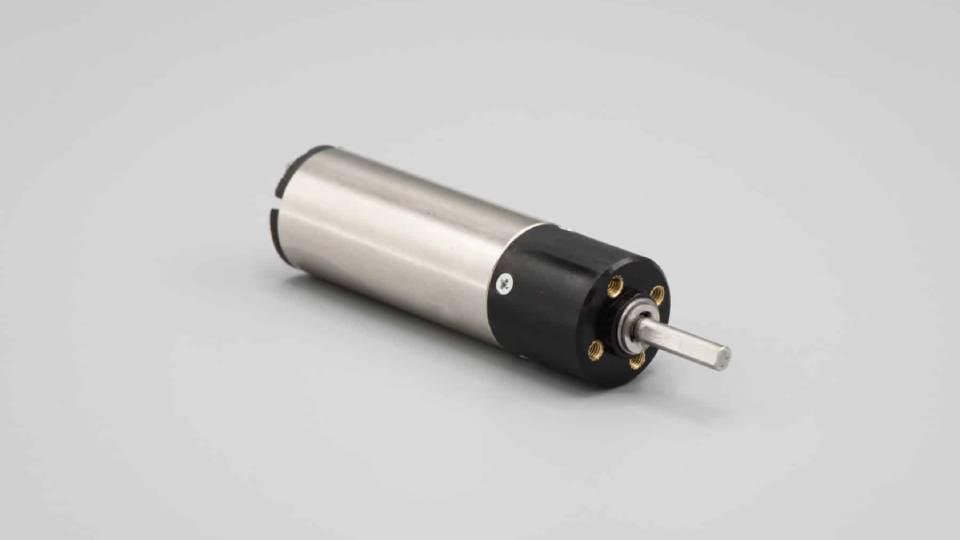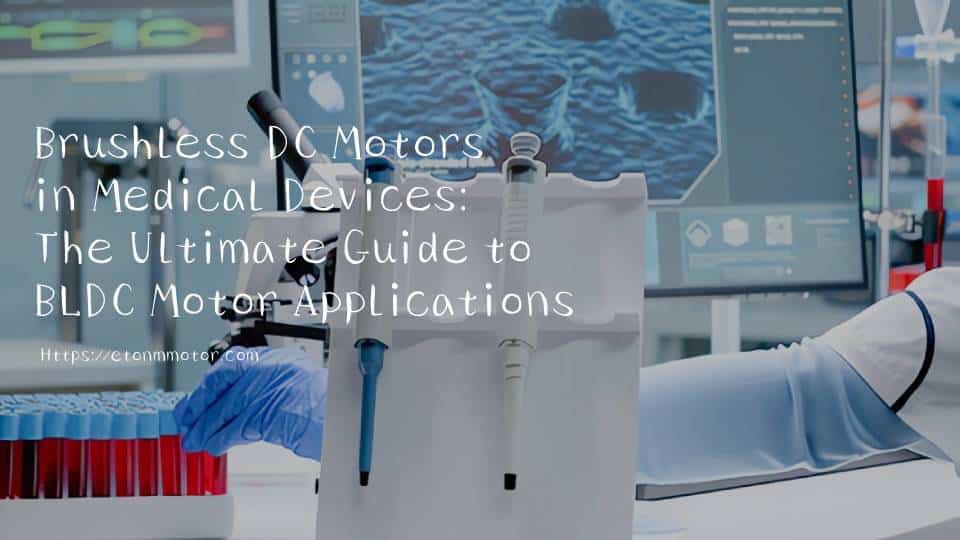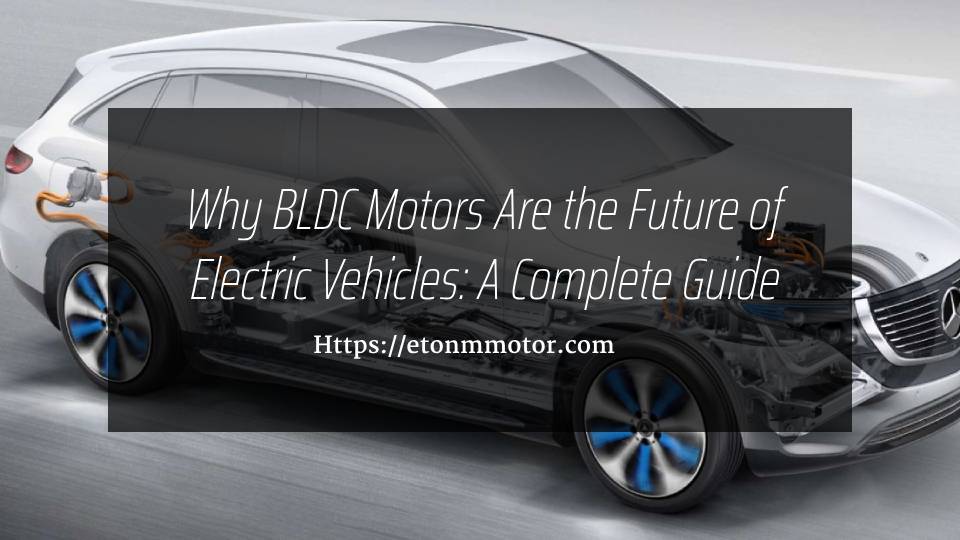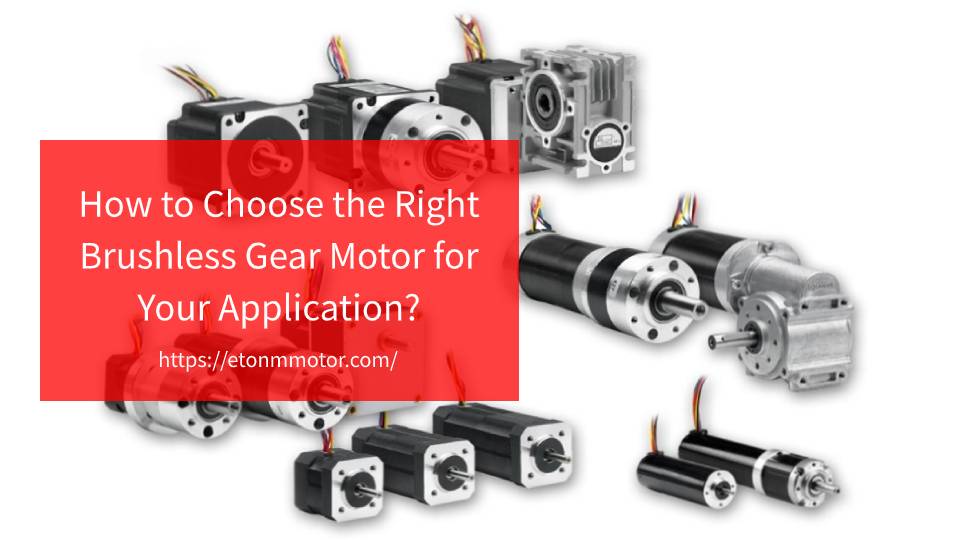Choosing the right brushless motor for your drone can make or break its performance. Learn how to pick the perfect motor for your needs with this comprehensive guide.
Table of Contents
Introduction
When it comes to building or upgrading a drone, one of the most critical decisions you’ll make is selecting the right brushless motor. Unlike traditional brushed motors, brushless motors are known for their exceptional efficiency, longer lifespan, and superior power-to-weight ratio. These features make them the preferred choice for drone enthusiasts and professionals alike, whether you’re racing, capturing aerial footage, or lifting heavy payloads.
However, with so many options available, choosing the perfect brushless motor for your drone can feel overwhelming. Factors like KV rating, motor size, power output, and cooling systems all play a role in determining how well your drone performs. A mismatched motor can lead to poor flight stability, reduced battery life, or even complete failure during operation.
In this guide, we’ll break down everything you need to know to make an informed decision. From understanding the basics of brushless motors to matching the right motor to your drone’s specific purpose, we’ve got you covered. Whether you’re a beginner or an experienced drone builder, this guide will help you optimize your drone’s performance and ensure you get the most out of your investment.
Ready to take your drone to the next level? Let’s dive in!

Why Brushless Motors Are Ideal for Drones
Brushless motors have become the gold standard for powering drones—and for good reason. Unlike their brushed counterparts, brushless motors are designed to deliver higher performance, greater efficiency, and longer lifespans, making them the perfect choice for modern drone applications. But what exactly makes them so well-suited for drones? Let’s break it down.
1. Efficiency and Power-to-Weight Ratio
One of the standout features of brushless motors is their exceptional efficiency. Without brushes to create friction, these motors experience less energy loss, which translates to longer flight times and better battery utilization. Additionally, brushless motors offer an impressive power-to-weight ratio, meaning they can deliver more thrust without adding unnecessary bulk to your drone. This is especially important for applications like racing drones, where every gram counts.
2. Durability and Low Maintenance
Brushed motors rely on physical brushes to transfer power, which wear out over time and require regular maintenance. Brushless motors, on the other hand, have a simpler design with fewer moving parts, making them more durable and reliable. This durability is crucial for drones, which often operate in demanding environments where maintenance opportunities are limited.
3. Smooth and Precise Performance
For tasks like aerial photography or videography, smooth and stable operation is essential. Brushless motors provide precise control over speed and torque, resulting in smoother rotations and less vibration. This not only improves the quality of your footage but also reduces wear and tear on other drone components.
4. Versatility Across Drone Types
Whether you’re building a high-speed racing drone, a heavy-lift drone for industrial applications, or a compact drone for recreational use, brushless motors offer the versatility to meet your needs. Their ability to handle a wide range of power requirements and operating conditions makes them a go-to solution for virtually any drone project.
In summary, brushless motors are the ideal choice for drones because they combine efficiency, durability, and precision in a lightweight package. If you’re looking to maximize your drone’s performance, opting for a brushless motor is a no-brainer.
Key Factors to Consider When Choosing a Brushless Motor
Selecting the right brushless motor for your drone isn’t just about picking the most powerful option—it’s about finding the perfect balance of performance, efficiency, and compatibility. To help you make the best choice, let’s dive into the key factors you need to consider.
1. KV Rating: What It Means and Why It Matters
The KV rating of a motor indicates how many RPMs (revolutions per minute) it will produce per volt of electricity applied. Simply put, a higher KV rating means higher speed, while a lower KV rating provides more torque.
- For Racing Drones: High KV motors (e.g., 2000-3000 KV) are ideal for achieving blistering speeds.
- For Aerial Photography Drones: Lower KV motors (e.g., 800-1200 KV) offer smoother, more stable rotations, which are crucial for capturing high-quality footage.
- For Heavy-Lift Drones: Low KV motors with high torque are essential for lifting heavier payloads efficiently.
Understanding your drone’s purpose will help you choose a motor with the right KV rating for optimal performance.
2. Motor Size and Weight
The size and weight of your motor directly impact your drone’s flight dynamics. A motor that’s too large or heavy can strain your drone’s frame and reduce flight time, while one that’s too small may not provide enough power.
- Stator Size: Measured in millimeters (e.g., 2207, where 22 is the diameter and 07 is the height), the stator size determines the motor’s power output. Larger stators generally provide more thrust but add weight.
- Weight Considerations: Always balance motor weight with your drone’s overall design. A lighter motor can improve agility, but it must still deliver sufficient power for your needs.
3. Power and Efficiency
Power output and efficiency are critical for maximizing your drone’s performance and battery life.
- Power (Watts): Ensure the motor can handle the power requirements of your drone’s propellers and payload.
- Efficiency: Look for motors with high efficiency ratings, as they convert more electrical energy into mechanical energy, reducing heat and extending battery life.
4. Cooling and Durability
Drones often operate in challenging conditions, so your motor must be built to last.
- Cooling Systems: Motors with effective cooling mechanisms (e.g., built-in fans or heat sinks) are less likely to overheat during extended use.
- Durability: Opt for motors made from high-quality materials like stainless steel or reinforced composites to withstand wear and tear.
5. Compatibility with Propellers and ESCs
Your motor’s performance depends heavily on its compatibility with other components.
- Propellers: Ensure the motor can handle the size and pitch of your propellers. Mismatched components can lead to inefficiency or even damage.
- Electronic Speed Controllers (ESCs): The ESC must match the motor’s power requirements to ensure smooth operation and prevent overheating.
By carefully considering these factors, you can choose a brushless motor that perfectly aligns with your drone’s needs. Whether you’re building a high-speed racer or a heavy-lift workhorse, the right motor will make all the difference.
Matching the Motor to Your Drone’s Purpose
Not all drones are created equal, and neither are their motors. The brushless motor you choose should align with your drone’s specific purpose to ensure optimal performance. Whether you’re building a racing drone, an aerial photography drone, or a heavy-lift drone, here’s how to match the motor to your needs.
1. Racing Drones
Racing drones are all about speed, agility, and quick response times. To achieve this, you’ll need a motor that can deliver high RPMs and rapid acceleration.
- High KV Rating: Look for motors with a KV rating between 2000 and 3000. These motors provide the speed needed to outpace competitors.
- Lightweight Design: Since every gram counts in racing, opt for compact, lightweight motors that won’t weigh down your drone.
- Efficient Cooling: Racing drones often push motors to their limits, so choose models with effective cooling systems to prevent overheating during intense flights.
2. Aerial Photography Drones
For drones used in photography or videography, stability and smooth operation are far more important than raw speed.
- Low to Medium KV Rating: Motors with a KV rating between 800 and 1200 are ideal. They provide the torque needed for stable, vibration-free flights.
- Quiet Operation: Brushless motors are naturally quieter than brushed motors, but some models are specifically designed to minimize noise—perfect for capturing audio during filming.
- Precision Control: Look for motors that offer smooth and precise throttle response, ensuring your drone can hover steadily for the perfect shot.
3. Heavy-Lift Drones
Heavy-lift drones are designed to carry payloads, such as cameras, sensors, or delivery packages. These drones require motors that can generate significant torque without sacrificing efficiency.
- Low KV Rating: Motors with a KV rating below 800 are best for heavy-lift applications. They provide the necessary torque to lift and maneuver heavy loads.
- High Power Output: Ensure the motor can handle the additional weight by checking its power rating (in watts) and thrust capabilities.
- Durability: Heavy-lift drones often operate in demanding environments, so choose motors built with robust materials and advanced cooling systems to ensure longevity.
4. Recreational and Hobby Drones
If you’re building a drone for casual flying or learning purposes, you don’t need the most advanced motor on the market. Instead, focus on reliability and ease of use.
- Moderate KV Rating: Motors with a KV rating between 1000 and 1500 strike a good balance between speed and torque for recreational use.
- Affordability: Since performance isn’t critical, you can opt for cost-effective motors that still deliver decent performance.
- Ease of Maintenance: Choose motors that are easy to install and maintain, especially if you’re new to drone building.
By matching your brushless motor to your drone’s specific purpose, you’ll ensure that your drone performs at its best, whether you’re racing, filming, lifting, or simply having fun.
Tips for Testing and Optimizing Motor Performance
Once you’ve selected the right brushless motor for your drone, the next step is to ensure it performs at its best. Testing and optimizing your motor’s performance can help you achieve smoother flights, longer battery life, and better overall results. Here are some practical tips to get the most out of your motor.
1. Conduct Thrust Tests
Thrust testing is one of the most effective ways to evaluate your motor’s performance. It measures how much force the motor can generate, which directly impacts your drone’s ability to lift off and maneuver.
- How to Test: Use a thrust stand or a simple DIY setup to measure the motor’s thrust with different propellers.
- What to Look For: Compare the results with your drone’s weight and payload requirements. Ideally, your motor should produce at least 2:1 thrust-to-weight ratio for optimal performance.
2. Pair Motors with the Right Propellers
The propeller is your motor’s partner in generating thrust, so choosing the right one is crucial.
- Size and Pitch: Larger propellers with a higher pitch generate more thrust but require more power. Match the propeller size and pitch to your motor’s KV rating and power output.
- Material: Lightweight materials like carbon fiber can improve efficiency, while durable materials like nylon are better for rugged use.
3. Optimize Electronic Speed Controller (ESC) Settings
The ESC acts as the bridge between your motor and the flight controller, so its settings can significantly impact performance.
- Timing and PWM Frequency: Adjusting these settings can improve motor efficiency and responsiveness. For example, higher timing settings work well for high-speed applications, while lower settings are better for torque.
- Calibration: Always calibrate your ESC to ensure smooth communication between the motor and the flight controller.
4. Monitor Temperature and Cooling
Overheating can damage your motor and reduce its lifespan, so it’s essential to keep an eye on temperature during operation.
- Use Heat Sinks or Cooling Fans: If your motor tends to overheat, consider adding heat sinks or cooling fans to improve heat dissipation.
- Avoid Overloading: Ensure your motor isn’t consistently operating at its maximum capacity, as this can lead to overheating and premature wear.
5. Test in Real-World Conditions
Lab tests are helpful, but real-world conditions can reveal issues that aren’t apparent in controlled environments.
- Flight Testing: Take your drone for a test flight to observe how the motor performs under different conditions (e.g., wind, altitude, or payload).
- Adjust as Needed: Based on your observations, tweak settings like propeller size, ESC configuration, or motor placement to optimize performance.
By following these tips, you can ensure your brushless motor delivers the best possible performance for your drone. Remember, even the best motor needs proper setup and testing to shine.
Common Mistakes to Avoid When Choosing a Brushless Motor
Selecting the right brushless motor for your drone can be a game-changer, but even experienced builders can make mistakes that compromise performance. To help you avoid these pitfalls, here are some common errors and how to steer clear of them.
1. Ignoring the KV Rating
One of the most frequent mistakes is overlooking the importance of the KV rating.
- The Problem: Choosing a motor with the wrong KV rating can lead to poor performance. For example, a high KV motor on a heavy-lift drone will struggle to generate enough torque, while a low KV motor on a racing drone will lack speed.
- The Solution: Always match the KV rating to your drone’s purpose. Use the guidelines in Section 3 to make an informed choice.
2. Overlooking Motor Size and Weight
Another common error is failing to consider how the motor’s size and weight will affect your drone.
- The Problem: A motor that’s too large or heavy can strain your drone’s frame, reduce flight time, and make it less agile. Conversely, a motor that’s too small may not provide enough power.
- The Solution: Check the motor’s stator size and weight specifications, and ensure they align with your drone’s design and payload requirements.
3. Neglecting Cooling and Durability
Ignoring the motor’s cooling and durability features can lead to overheating and premature failure.
- The Problem: Motors without proper cooling systems can overheat during extended use, especially in demanding applications like racing or heavy lifting.
- The Solution: Choose motors with built-in cooling mechanisms, such as heat sinks or fans, and opt for durable materials like stainless steel or reinforced composites.
4. Mismatching Motors with Propellers and ESCs
Incompatibility between the motor, propellers, and ESCs is a recipe for inefficiency and damage.
- The Problem: Using propellers that are too large or too small for your motor can strain the system, while an ESC that doesn’t match the motor’s power requirements can cause overheating or failure.
- The Solution: Always check the manufacturer’s recommendations for compatible propellers and ESCs, and test the setup before finalizing your build.
5. Focusing Solely on Price
While it’s tempting to go for the cheapest option, cutting corners on motor quality can cost you in the long run.
- The Problem: Low-cost motors may lack the efficiency, durability, or performance needed for your drone, leading to frequent replacements or poor flight performance.
- The Solution: Invest in a high-quality brushless motor from a reputable manufacturer like Etonm Motor. While it may cost more upfront, it will save you time, money, and frustration in the long run.
By avoiding these common mistakes, you can ensure that your brushless motor delivers the performance and reliability your drone needs. Take the time to research, test, and optimize your setup—it’s worth the effort.
Conclusion: Choosing the Right Brushless Motor for Your Drone
Selecting the perfect brushless motor for your drone is a critical step in ensuring optimal performance, whether you’re racing, capturing stunning aerial footage, or lifting heavy payloads. By understanding key factors like KV rating, motor size, power output, and cooling systems, you can make an informed decision that aligns with your drone’s specific needs.
Remember, the right motor isn’t just about raw power—it’s about finding the perfect balance of efficiency, durability, and compatibility. Avoid common mistakes like ignoring the KV rating or mismatching components, and take the time to test and optimize your setup for real-world conditions.
At Etonm Motor, we specialize in providing high-quality, customizable brushless motors designed to meet the demands of various drone applications. Whether you’re a hobbyist or a professional, our motors are built to deliver exceptional performance and reliability.
Ready to take your drone to the next level? Explore our range of brushless motors today and find the perfect match for your project. If you have any questions or need assistance, don’t hesitate to reach out to our team of experts. Happy flying!
Related Reading
- What Factors Affect the Performance of Brushless Motors? A Comprehensive Guide
- How Do BLDC Worm Gear Motors Work? A Complete Guide
- What is a BLDC Worm Gear Motor? A Comprehensive Guide for 2025
- The Ultimate Guide to Troubleshooting BLDC Worm Gear Motors in 2025
- Why BLDC Motors Are the Future of Electric Vehicles: A Complete Guide
- Brushless DC Motors in Medical Devices: The Ultimate Guide to BLDC Motor Applications
- Top 5 Applications of Brushless DC Motors in Industrial Automation
- How to Choose the Right BLDC Motor for Robotics Applications
- How To Choose A Brushless Gear Motor | Etonm Motor Guide
- How to Choose the Right Planetary Gear Motor for Your Application
- What Are the Key Advantages of Brushless Motors?
- Brushless DC Motors: Applications In Smart Home, Medical & Robotics

